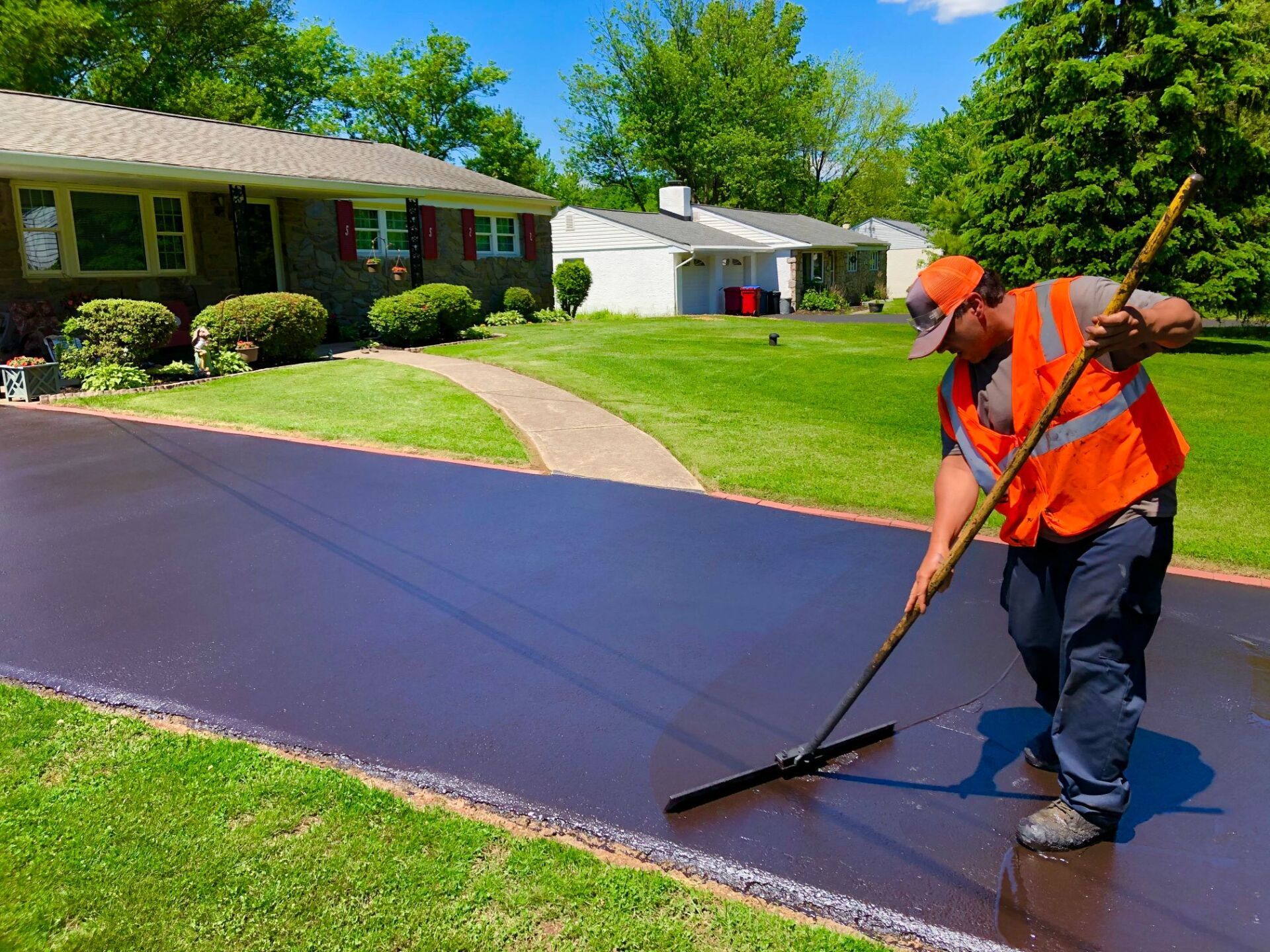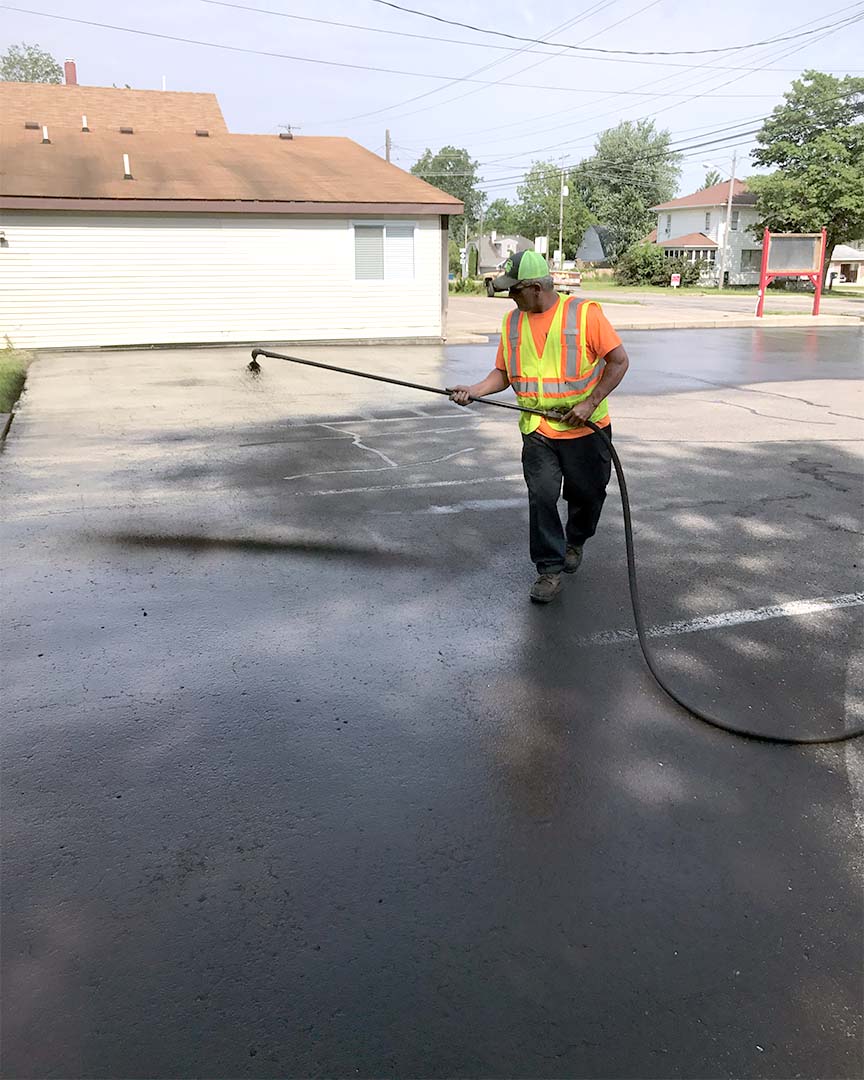Enhance Durability with Cold Mix Asphalt: Professional Sealing Solutions
Cold Mix Asphalt Vs. Hot Mix Asphalt: Which Is Right for You?

Structure Distinctions
Cold mix and warm mix asphalts differ substantially in their make-up, with distinctive attributes that impact their efficiency and applications. Cold mix asphalt is produced by emulsifying the asphalt binder with water and an emulsifying representative before mixing it with aggregate. This method enables the asphalt to be workable at lower temperatures, making it suitable for short-term repairs and for use in cooler climate problems. Warm mix asphalt, on the other hand, is made at heats, commonly in between 300-350 ° F, which helps to achieve far better compaction and an extra long lasting end product. The hot mix asphalt production procedure entails heating the aggregate and asphalt binder individually before integrating them at the asphalt plant.
Additionally, cool mix asphalt often tends to be much less dense and more adaptable than warm mix asphalt. This adaptability makes it better suited for locations with higher levels of activity, such as driveways or roads with rush hour. On the other hand, warm mix asphalt is understood for its high toughness and resistance to rutting and breaking, making it a recommended option for freeways and high-traffic roads where durability is essential.
Installment Refine Differences
The process of mounting cold mix and hot mix asphalt shows noteworthy differences in their needs and treatments. Cold mix asphalt, being a much more versatile material, can be used straight from the bag or container onto the fracture or harmed area. It calls for minimal preparation work, such as cleansing the area and condensing the cool blend with hand tools. This makes it a hassle-free option for quick and short-lived solutions. In contrast, warm mix asphalt necessitates a more sophisticated setup procedure. It entails heating up the combination to heats prior to laying it down on a correctly prepared base. The preparation includes compacting the base, using a tack layer, and making use of hefty machinery like pavers and compactors for asphalt patch repair a smooth and long lasting finish. Due to the home heating needs, hot mix asphalt setups are typically carried out by specialists with specific devices, ensuring an extra long-term and structurally audio result.
Toughness and Longevity Elements
When thinking about asphalt choices, sturdiness and longevity are critical factors to review for lasting pavement performance. Warm mix asphalt (HMA) is known for its outstanding durability and longevity.
In regards to long life, HMA usually surpasses CMA as a result of its superior stamina and resistance homes. HMA pavements have a longer solution life, requiring less constant repairs and maintenance, which can translate to set you back savings in the future. Additionally, HMA pavements are much more easily customizable to meet details job needs, additionally improving their toughness.
Cost Considerations
Taking into consideration the financial implications is a vital element when reviewing the selection in between hot mix asphalt (HMA) and cold mix asphalt (CMA) for sidewalk tasks. While the initial expense of hot mix asphalt is typically greater than that of cold mix asphalt, HMA typically gives a more cost-efficient solution in the future because of its superior longevity and durability. HMA is recognized for its capacity to endure rush hour loads and severe climate condition, decreasing the need for constant repair work and upkeep. On the various other hand, cold mix asphalt is more budget friendly ahead of time yet may require more constant patching and resurfacing, resulting in greater maintenance prices in time.
In addition to product prices, it's crucial to think about the expenses connected with installation and maintenance when comparing HMA and CMA. Inevitably, the choice in between HMA and CMA must take into account not just the preliminary price however also the long-lasting financial ramifications to establish the most affordable option for the details pavement job.
Environmental Influence Contrast
Contrast of the ecological influences between hot mix asphalt (HMA) and chilly mix asphalt (CMA) reveals distinct differences in sustainability practices. HMA manufacturing needs high temperatures, leading to enhanced power consumption and greenhouse gas discharges.
In addition, making use of CMA usually involves recycling existing asphalt pavement, promoting resource conservation and decreasing the quantity of waste sent out to garbage dumps. This recycling element even more enhances the sustainability of CMA compared to HMA. In general, when taking into consideration the ecological effect, CMA arises as an extra environmentally lasting option due to its reduced power needs, lowered emissions, and the potential for reusing existing materials. By choosing for CMA over HMA, road construction projects can contribute positively to ecological preservation efforts.
Verdict
To conclude, the selection between cold mix asphalt (CMA) and warm mix asphalt (HMA) depends upon different elements such as composition, installation process, durability, long life, expense, and environmental impact. asphalt repair. While CMA offers a fast and affordable remedy for small repair services, HMA ensures exceptional sturdiness and durability for rush hour areas. Consider these variables very carefully to identify which kind of asphalt is the right choice for your paving needs

Considering the monetary effects is an important element when examining the option between warm mix asphalt (HMA) and cool mix asphalt (CMA) for sidewalk projects. While the first expense of hot mix asphalt is typically greater than that of chilly mix asphalt, HMA frequently gives a much more cost-efficient option in the lengthy run due to its premium toughness and longevity. cold mix asphalt.Contrast of the ecological impacts between hot mix asphalt (HMA) and chilly mix asphalt (CMA) reveals distinct differences in sustainability methods.In conclusion, the choice in between cool mix asphalt (CMA) and warm mix asphalt (HMA) depends on various elements such as composition, installment procedure, resilience, durability, price, and environmental effect